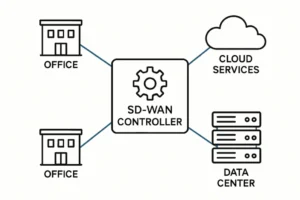Corporate apparel programs are more than just uniforms; they represent a comprehensive strategy that can transform the dynamics and spirit within an organization. When implemented thoughtfully, corporate branded apparel serves to unite employees, spark collective pride, and communicate a consistent brand message both internally and externally.
Wearing company-branded clothing daily is a tangible display of alignment with company values. Employees find themselves visually and emotionally invested in their organization’s story—a factor that not only boosts morale but also makes everyone feel like a vital part of something greater. As more organizations recognize the far-reaching impact of branded apparel, these programs have rapidly evolved beyond function and aesthetics, becoming key tools for cultivating positive and productive company cultures.
Beyond the unifying effect, a well-managed apparel program projects professionalism to partners, customers, and the public. The choices made in design, sustainability, and inclusivity all contribute to the company’s public image, directly influencing how the outside world perceives the brand and its workforce. The benefits even extend into contemporary hybrid work environments, enabling seamless transitions without sacrificing the spirit of unity.
Amidst this growing trend, it’s vital to ensure that apparel decisions authentically reflect the values and vision of your company, catering to the evolving needs of your workforce. Companies that strike the right balance enjoy stronger engagement, better customer experiences, and standout reputations in their industries.
Fostering Unity and Belonging
When employees wear company-branded apparel, they become part of a visible, unified community. This visible solidarity has a positive influence on workplace dynamics by breaking down barriers and fostering cross-departmental collaboration. Research from Coventry University found that wearing a well-made, well-fitting uniform can make employees feel 22% happier at work, as their collective attire symbolizes a shared purpose and direction.
These apparel programs are particularly influential in large or multi-site organizations, where teams may otherwise struggle to feel interconnected. The simple act of donning the same logo helps foster conversations, camaraderie, and a powerful sense of “us,” strengthening bonds that span teams and regions.
Enhancing Brand Identity
Branded outfits are constant reminders of company values—silently reinforcing the mission both internally and externally. When staff confidently wear the brand, they serve as live ambassadors, promoting a consistent and recognizable presence whether at a client location or a community event. Well-curated apparel isn’t merely about the clothing; it’s about signaling expertise, reliability, and pride in the organization’s story.
For customers and guests, branded attire offers immediate recognition. It makes it effortless for visitors to spot employees, ask questions, and experience exemplary service. This clarity goes a long way in enhancing the customer journey and amplifying brand trust. As Forbes highlights, a strong corporate image is often seeded through everyday details, with branded apparel being a subtle yet significant contributor.
Boosting Employee Morale
High-quality, branded clothing signals that an organization values its people. Employees who are provided with comfortable, stylish, and functional attire feel valued, ultimately leading to upward trends in morale and retention. The resulting “tribe mentality” fosters passion and motivation, leading to increased employee engagement.
Beyond pride, practical benefits also exist. Uniforms can resolve wardrobe issues, alleviate peer pressure regarding trendy attire, and enable workers to focus on their contributions rather than their appearance. Over time, an apparel program can become a cherished tradition—something employees eagerly anticipate and enjoy.
Promoting Professionalism
Uniforms elevate standards across the board by erasing ambiguity about what’s appropriate. Everyone from new hires to executives aligns visually, exuding an air of capability and customer focus. For sectors where first impressions matter, such as hospitality or consulting, this visual professionalism is invaluable.
It also simplifies HR management, removing common dress code disputes and leveling the playing field so all staff present the best possible image of the company. A workplace anchored in respect and standards fosters deeper trust with clients and stronger working relationships.
Supporting Sustainability Initiatives
Forward-thinking organizations are leveraging apparel programs to drive sustainability goals. Modern suppliers offer eco-conscious fabrics—such as organic cotton, bamboo fibers, and recycled polyester—that align with environmental commitments while still delivering comfort and style. Employees take pride in representing companies that champion responsible choices, and such efforts increasingly influence customers in their purchasing decisions.
By communicating these initiatives, companies reinforce their dedication to global well-being and responsible business—strengthening both internal culture and external perception.
Adapting to Hybrid Work Environments
As flexible and remote work models gain traction, corporate apparel must adapt. Sweater vests, polos, or even branded tees are merging comfort with professionalism—critical for seamless transitions from home offices to headquarters. These apparel choices empower staff to represent the brand confidently, regardless of their location, and maintain strong connections within dispersed teams.
Customizing apparel for remote and hybrid scenarios is a growing area, enabling companies to standardize the remote work experience without sacrificing individuality or inclusion. This flexibility helps maintain the pervasive sense of unity, even when employees are not physically together.
Personalization and Inclusivity
Modern apparel programs champion diversity and personal expression. By offering sizing for all body types, gender-neutral options, and allowing employees to select styles within approved guidelines, organizations ensure their workforce feels seen and appreciated. Personalization also increases engagement; allowing small touches, such as name embroideries or departmental colors, helps employees feel a deeper connection to both the brand and their own identities.
Inclusivity goes beyond fit and style to ensure everyone—regardless of ability or background—can participate. This is essential in an era where representation and equity are business imperatives, not afterthoughts.
Conclusion
Corporate apparel programs, when carefully crafted, can serve as powerful catalysts for a stronger company culture. They foster a sense of belonging, amplify brand messaging, boost morale, establish standards, promote responsible business practices, and support hybrid work—all while respecting individuality. In a competitive landscape, companies that prioritize thoughtful apparel strategies position themselves as leaders in unity and engagement, driving both internal satisfaction and external success.
Also Read
- Tips to Handle Major Life Events with Confidence
- Redefining Modern Architecture: Integrating Nature, Technology, and Community
- Steps to Consider Before Choosing Metal Roof Replacement








